Introducción
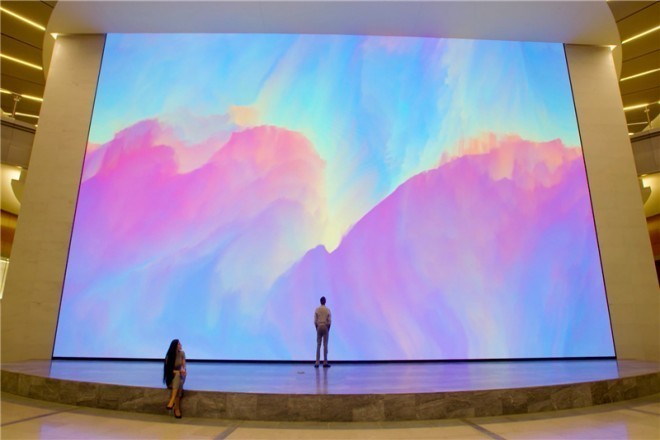
Pantalla LED, the darling of modern visual art, has become an indispensable part of our lives with its dazzling colors and dynamic images. But have you ever thought about what kind of care is needed behind these screens to keep them in the best condition?
In this article, we will reveal tips for maintaining LED display screens to keep your screen as good as it is new.
1. Quickly understand your LED display screen
1). Resolución:
It is the number of pixels on the screen. The more pixels, the clearer the image. For example, a resolution of 1920*1080 means that there are 1920 columns and 1080 rows of pixels on the screen, so the screen looks very delicate.
2). Brillo:
It is how bright the screen is. For outdoor displays, brightness is important because the sun is very bright, and if the screen is not bright enough, it will not be clear. Therefore, outdoor displays are usually very bright.
3) Contraste:
It is the difference between the brightest and darkest parts of the screen. The higher the contrast, the clearer the image and the more details. Imagine if the brightest and darkest parts of a picture are about the same brightness; the picture will look blurry.
4). Temperature:
The screen should not be too hot or too cold. If it is too hot, the lamp on the screen will break, the screen will dim, or other problems will occur. If it is too cold, the screen may not work properly. Therefore, it is best to place the screen in a place with moderate temperature.
5). Humidity:
The screen should not be too humid. If it is too humid, moisture may get into the screen, causing a short circuit or lamp failure. Therefore, it is best to keep the area around the screen dry and not let water splash on the screen.
2. Daily maintenance tips for LED display
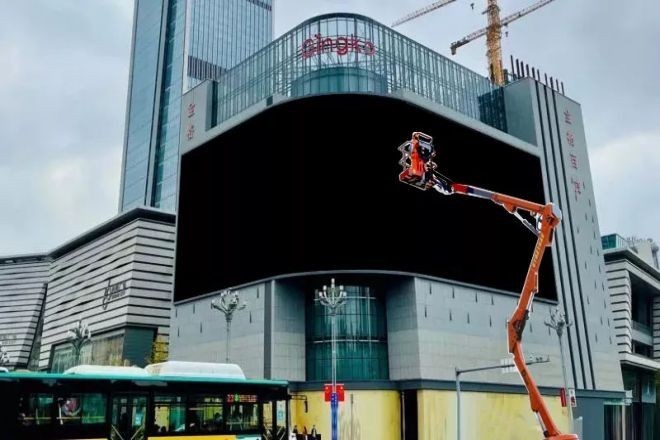
In order to maintain the best performance of LED display and extend its service life, here are some practical daily maintenance suggestions:
1). Cleaning the screen
- The correct cleaning method:
Use a soft, lint-free cloth, such as a microfiber cloth, to avoid scratching the surface of the screen.
Choose a dedicated LED screen cleaner and avoid using cleaners containing alcohol, ammonia or corrosive chemicals, which may damage the coating on the surface of the screen.
Wipe the screen gently to avoid excessive force that may damage the screen.
- Cleaning frequency:
It is recommended to clean at least once a month or adjust appropriately according to the use environment and frequency of use. In the case of a dusty or dirty environment, more frequent cleaning may be required.
2). Avoid extreme environments
- Too high or too low temperature:
The operating temperature range of LED display screens is usually between -20℃ and 50℃ (the specific range may vary from product to product). Too high or too low temperature may affect the performance and life of the display screen.
Under extreme temperatures, the display screen may have problems such as reduced brightness, color distortion, or malfunction.
- Moisture and dustproof:
Excessive humidity may cause short circuit or corrosion of the internal circuit of the display screen, so make sure the display screen is in a dry environment.
Dust not only affects the display effect, but also may block the heat dissipation holes and cause the display screen to overheat. Therefore, the dust around the display screen should be cleaned regularly.
3). Reasonable arrangement of power on and off
- Evite encendidos y apagados frecuentes:
Frequent power on and off will put additional burden on the power circuit and backlight system of the display screen, thereby shortening the life of the display screen.
If possible, try to keep the display screen on instead of switching it on and off frequently.
- Correct power on/off sequence:
When turning on the computer, turn on the power switch of the display first, then turn on the computer or other signal source.
When shutting down the computer, turn off the computer or other signal source first, then turn off the display power switch.
This ensures that the display works in a stable power environment and reduces damage caused by power fluctuations.
Following the above maintenance tips can help you maintain the best performance of the LED display and extend its service life.
3. Avoid man-made damage to the LED display
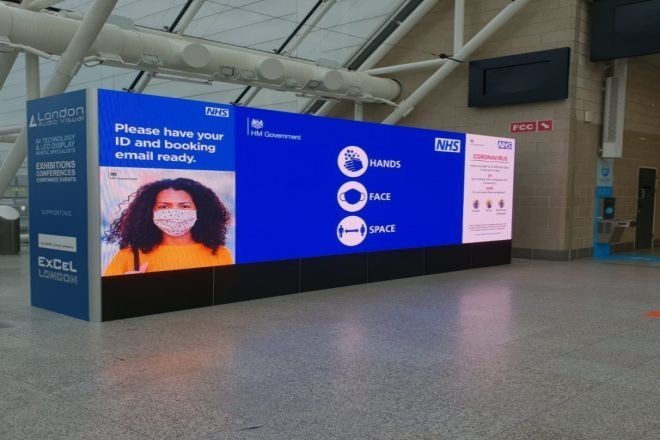
The LED display is a very delicate device that requires us to take good care of it. Here are some simple ways to help us avoid accidentally damaging it:
1). Don’t let the display be hit
- The display is very “delicate”:
The outer shell and the parts inside the LED display are very sensitive and can be easily damaged by impact, knocking, or falling.
- Be careful when carrying and installing:
When carrying: take it gently and put it gently, just like treating a fragile baby. You can use special handling tools, such as a crane or forklift, to ensure that it moves steadily.
When installing, find a stable place to install it, and don’t let it wobble. Don’t hit it with hard objects during installation; follow the steps in the manual.
2). Don’t let the display screen be electrically disturbed
- Keep away from strong magnetic fields and high-voltage power supplies:
Some electrical appliances, such as large speakers and generators, will emit strong magnetic fields or high-voltage electricity, which may interfere with the normal operation of the LED display screen and even cause it to break down. Therefore, the display screen should be away from these appliances.
- Correct wiring:
Power cord: When connecting the power supply, pay attention to the positive and negative poles; don’t connect them in reverse, and don’t forget the ground wire. Use a good power cord, and don’t use a broken or poor-quality one.
Signal line: When connecting the signal line, make sure it is plugged in tightly, and don’t let it get loose. Use a good signal line as well so that the displayed picture will be clearer.
Finally, don’t forget to check the display screen regularly to see if it works well and whether the line is connected properly so that we can ensure that it always serves us well!
4. Software maintenance of LED display screen
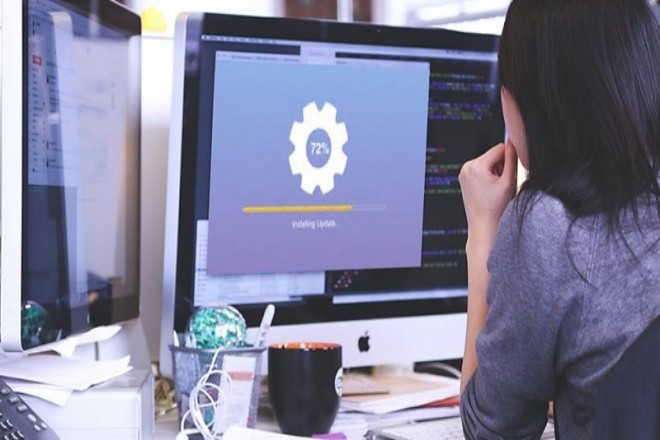
LED display screens are like our computers or mobile phones, and they also need regular software care to keep them running fast and well. Here are two simple ways to help us take better care of the LED display:
1). “Upgrade” the display’s software
1.1). Why “upgrade”:
The display’s software (we call it firmware) is like its brain, controlling how it works. Sometimes, this brain may have some minor problems or not smart enough. At this time, we need to “upgrade” it to make it smarter and work more smoothly.
1.2). How to “upgrade” safely:
Back up first: Just like we back up photos and contacts before changing our phones, we should also back up its important data and settings before “upgrading” the display.
Find the right version: Go to the display manufacturer’s website to find the latest software version. Don’t just find an unknown website to download it, which may infect the display with a “virus”.
Follow the steps: Follow the steps given by the manufacturer step by step; don’t rush, and don’t skip any step. During the upgrade process, make sure the display is always connected to the power and signal source, and don’t let it suddenly “run out of food.”
Check it again: After the upgrade, remember to restart the display and then check it carefully to see if it works better.
2). Adjust the “eyes” of the display screen
2.1). How to adjust the brillo according to the environment:
If the display screen is placed in a very dark place, we will lower its brightness a little so that the eyes will not be too tired after watching for a long time.
If it is placed in a very bright place, such as under the sun, then we have to increase the brightness so that we can see the content on the display screen clearly.
2.2). How to adjust the contrast:
Contrast is the difference between the brightest and darkest places on the display screen. We can adjust the contrast according to our needs to make the content on the display screen look clearer and more vivid.
2.3). Don’t let the display screen “stare” at a picture:
If the display screen keeps showing the same picture, the lamp beads on it may overheat because they are always on, so the display screen will break faster. Therefore, we need to change the displayed content regularly or lower the brightness so that the display screen can be used longer.
5. Troubleshooting and maintenance of LED display screens
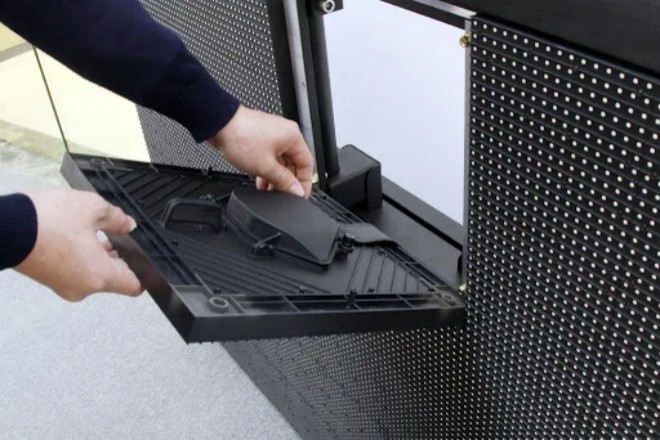
LED display screens may encounter some minor problems after being used for a long time, such as the screen flickering or the color becoming strange. Don’t worry. Let’s talk about how to solve these problems yourself and when to ask professionals for help.
1). Common problems, easy to solve!
1.1). The screen flickers
- Possible causes:
Unstable power supply or loose cable connecting the display.
- Solución:
Plug in the power cord tightly or try a stable power supply.
Check the cables connecting the display and make sure they are all plugged in tightly.
1.2). The color becomes strange
- Possible causes:
The parts inside the display are old, or there is a problem with the settings.
- Solución:
If you don’t know how to fix it yourself, contact a professional for help.
Check the display settings to see if the color parameters are adjusted incorrectly.
1.3). The screen does not display or turn black
- Possible causes:
The power supply is broken or there is a problem with the “brain” (control card) that controls the display.
- Solución:
Check the power supply and make sure it is working properly.
If the power supply is fine, it may be that the control card is broken and you need to find a professional to fix it.
1.4). There are black or white lines on the screen
- Possible causes:
Apart of the display is broken, or there is a problem with the cable connecting the display.
- Solución:
Contact a professional to check and replace the broken part.
Check the cables connecting the display and make sure they are all intact.
2). It is more reliable to ask a professional for help!
- When should you find a professional?
When you can’t solve the problem yourself, such as when the internal parts of the display are broken.
When the display is seriously damaged, such as the screen is broken, or many lights are not on.
When it needs regular maintenance or inspection, make sure the display is always in good working order.
- How to find a reliable professional?
Look at the qualifications: Make sure they have relevant repair certificates and qualifications.
Listen to word of mouth: Ask others about their evaluation or check their information online.
Ask about experience: Choose those professionals who are experienced and technically savvy.
Talk about price and time: Before repairing, ask them how much they will cost and how long it will take to fix it.
Conclusión
Caring for LED displays is like taking care of an old friend, which requires patience and care. I hope the tips in this article can help you take better care of your display and make it a long-term partner in your life.
Finalmente, si quieres saber más sobre las pantallas LED, Por favor póngase en contacto con nosotros.
